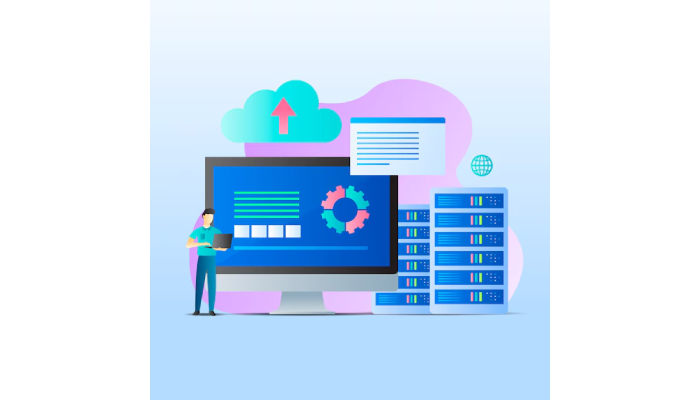Scaling Your Web Applications: How An Application Load Balancer Helps?
As businesses expand their digital presence, web applications must handle increasing traffic, complex user interactions, and diverse workloads. Ensuring a seamless and responsive user experience becomes challenging when traffic surges, especially during peak periods. Without an efficient system, performance bottlenecks, slow response times, and server crashes become inevitable. To address these challenges, organizations implement scalable architectures that dynamically manage growing demands. One of the most effective solutions in this context is an Application Load Balancer (ALB).
Understanding An Application Load Balancer
An Application Load Balancer is a network traffic management system that directs client requests to the most appropriate server within a server pool. Unlike a traditional load balancer that distributes traffic purely based on network layers (Layer 4 – Transport Layer), an ALB operates at Layer 7 (Application Layer) of the OSI model. This means it can make intelligent routing decisions based on the content of HTTP(S) requests, such as URL paths, request headers, cookies, and application data.
Key functions of an Application Load Balancer include:
- Traffic Distribution: Ensures that no single server bears excessive load by evenly spreading incoming requests.
- Content-Based Routing: Routes requests to specific backend servers based on predefined rules (e.g., forwarding API requests to a microservice and static content to a caching server).
- Session Persistence: Maintains user sessions by directing consecutive requests from the same client to a specific server.
- Health Monitoring: Continuously checks server health and redirects traffic to available instances in case of failure.
By leveraging these capabilities, an Application Load Balancer plays a crucial role in scaling web applications and optimizing their performance.
Benefits Of An Application Load Balancer In Scaling Web Applications
1. Efficient Traffic Distribution
A core challenge in scaling web applications is preventing performance bottlenecks when traffic spikes. An Application Load Balancer efficiently distributes traffic across multiple backend servers, ensuring that no single server is overwhelmed. This results in better resource utilization, reduced response times, and a seamless user experience, even during high-traffic events such as Black Friday sales or viral marketing campaigns.
Moreover, modern ALBs use adaptive load-balancing algorithms such as:
- Round Robin: Distributes requests sequentially across all servers.
- Least Connections: Routes requests to the server with the fewest active connections.
- IP Hashing: Maps clients to specific servers based on their IP address for session consistency.
These algorithms ensure an optimized workload distribution, preventing overloads and keeping application performance stable.
2. Scalability and Auto-Scaling Integration
To handle fluctuating traffic demands, modern applications integrate auto-scaling solutions that dynamically add or remove server instances based on demand. An Application Load Balancer works seamlessly with auto-scaling services by automatically updating its backend pool whenever new servers are added or removed.
For example, in cloud environments such as AWS, Azure, or Google Cloud, ALBs integrate with Auto Scaling Groups to scale resources up or down based on real-time traffic patterns. This allows applications to maintain optimal performance during peak loads while minimizing costs during low-traffic periods.
3. Improved Fault Tolerance and High Availability
One of the biggest risks of a growing web application is server failure. Without a failover mechanism, a single point of failure can disrupt the entire system. An Application Load Balancer enhances fault tolerance by continuously monitoring server health and rerouting traffic away from unresponsive instances.
Most ALBs come with built-in health checks that regularly verify server availability. If a server becomes unhealthy due to crashes, hardware failures, or software issues, the ALB automatically removes it from the traffic rotation and directs requests to functional servers. This ensures high availability and business continuity, preventing service disruptions.
4. Enhanced Security and Protection Against Cyber Threats
As web applications scale, they become more vulnerable to cyber threats, including DDoS (Distributed Denial of Service) attacks, SQL injections, and cross-site scripting (XSS) exploits.
An Application Load Balancer enhances security by offering:
- DDoS Mitigation: By distributing traffic across multiple instances, ALBs reduce the impact of volumetric attacks that attempt to overload a single server.
- SSL/TLS Offloading: ALBs handle SSL/TLS encryption and decryption, reducing the processing burden on backend servers and ensuring secure communication.
- Web Application Firewall (WAF) Integration: Many ALBs support WAF integration to filter malicious traffic and block potential threats.
By implementing robust security mechanisms, ALBs protect web applications from common vulnerabilities while maintaining optimal performance.
Seamless Microservices And API Gateway Support
Modern applications are shifting towards microservices architectures, where different components (e.g., authentication, payment processing, and data retrieval) operate as independent services. An Application Load Balancer supports microservices by routing traffic to the appropriate service based on the request type.
For instance, ALBs can:
- Route API requests to dedicated microservices.
- Direct image and video processing tasks to specialized servers.
- Forward dynamic content requests to application servers while caching static assets.
Additionally, ALBs work as API gateways, managing authentication, request throttling, and versioning for distributed services. This makes them an essential component for scaling microservices-based applications.
Optimizing Performance And User Experience
A slow-loading web application leads to high bounce rates and dissatisfied users. An Application Load Balancer optimizes response times by leveraging features such as:
- Content Caching: Some ALBs integrate with caching solutions to store frequently requested content closer to users.
- Compression and Response Optimization: ALBs compress HTTP responses to reduce bandwidth usage and improve loading speeds.
- Geo-load balancing: Directs users to the nearest data center, reducing latency for a global audience.
By implementing these optimizations, an Application Load Balancer ensures a fast, smooth, and engaging user experience, which is crucial for customer retention and conversion rates.
Conclusion
Scaling web applications efficiently is a complex challenge that requires intelligent traffic management, high availability, security, and performance optimization. An Application Load Balancer plays a pivotal role in distributing traffic, improving fault tolerance, integrating with auto-scaling mechanisms, enhancing security, and supporting microservices architectures.
For businesses experiencing growth or sudden traffic surges, implementing an Application Load Balancer is a cost-effective and scalable solution that ensures reliability and seamless user experiences. Whether deployed on cloud platforms, hybrid infrastructures, or traditional on-premises environments, ALBs remain a cornerstone of modern web application scalability.





